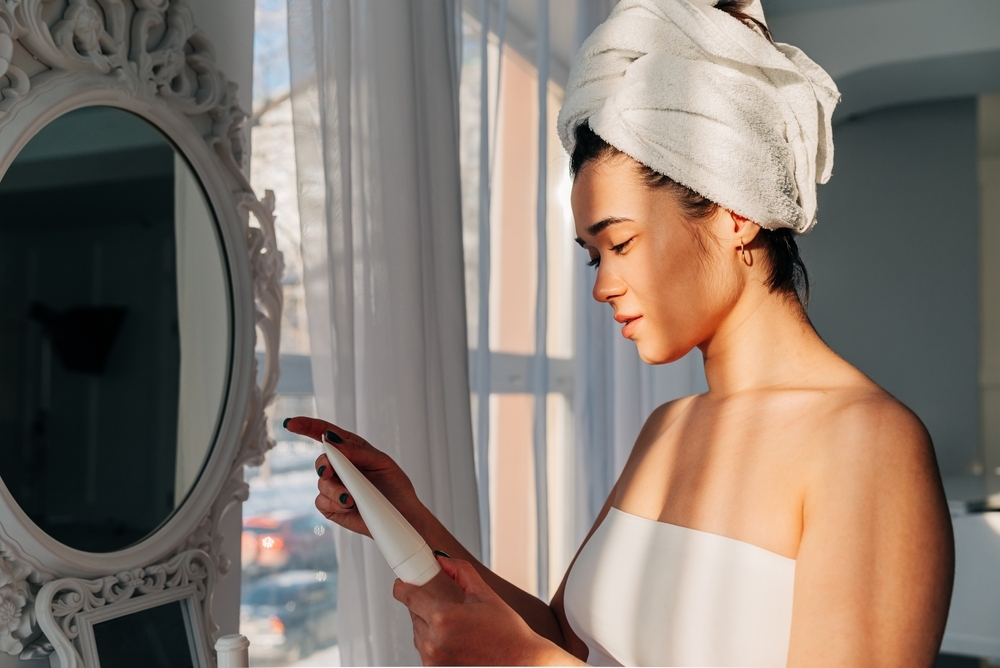One of the best ways to stay on top of your sunscreen reapplication game throughout the day is to keep a small bottle in your purse, backpack, or car. But did you know it's important to ensure your sunscreen doesn't get too hot too often? When sunscreen's left in a hot car or in direct sunlight on a sandy beach for hours, it can become less effective over time.
So, why does sunscreen go bad in heat, and how can you tell if your sunscreen is expired? Read on to find out how to safely store your sun protection this summer.
How Heat Exposure Affects Sunscreen
Extreme exposure to heat and direct sunlight (say, for example, you leave your sunscreen on the dashboard of your car or keep it in your back seat all summer long) can degrade the ingredients and chemicals within your sunscreen.
Your sunscreen formula can also affect how it reacts to heat. Chemical sunscreens absorb ultraviolet (UV) rays, which triggers a chemical shift. So, when they get too hot, these formulas change on a molecular level, making their active ingredients less effective.
Mineral sunscreens protect your skin by creating a physical barrier with ingredients like Titanium Dioxide and Zinc Oxide. Mineral formulas can remain stable longer than chemical sunscreens, but they still degrade with time.
Signs of Expired Sunscreen
Always check your sunscreen's expiration date. This should be clearly stamped on the sunscreen bottle. If you can't see it or it's rubbed off, the US Food and Drug Administration deems sunscreen safe to use within three years of purchase as long as it's stored away from excessive heat and direct sun.
Aside from the expiration date, there are some additional ways you can tell if your sunscreen is expired. First, check the texture and color. If it's started to separate or change color, it's most likely expired and needs to be replaced. Physical (or mineral) sunscreens may feel gritty to the touch when expired, while chemical sunscreens may become watery.
If your sunscreen smells different than when you first bought it, count that as another sign it needs replacing.
How to Store Sunscreen
The best place to store your sunscreen is in a cool, dark place, like a cupboard or drawer. When you're out and about or on the beach for the day, keep your sunscreen bottle wrapped in a towel and place it in the shade when possible so it doesn't get too hot. If you're taking along a cooler, throw it in with your food or beverages.
If you like to leave a bottle of sunscreen in your car, place it inside a cool towel in the glove box rather than on the dash or car seat, and park in the shade whenever possible.
Daily Sun Protection for the Win
Good skin health starts with daily sunscreen. Apply your favorite formula every morning before leaving the house and reapply every few hours to exposed skin, like your face, chest, and hands. By keeping a bottle of sunscreen in a cool place in the car or in your bag, you can reapply quickly and easily in the same way you top off your lip balm or hand lotion.
The simplest way to develop healthy sunscreen habits is to find a sunscreen formula you love so it never feels like a chore. For example, EltaMD UV AOX Mist is as refreshing as it is protective. It has a sheer finish that doesn't leave behind any greasy residue and goes on easily over makeup and other skin care products. Bonus!
So, does sunscreen go bad in heat? Leaving your bottle out in the sun and heat can degrade its key protective ingredients over time, so store your sunscreen in a cool, dry space and keep your eye on its expiration date. You can then confidently apply it each day knowing it'll keep your skin healthy, glowing, and protected to the best of its ability.
